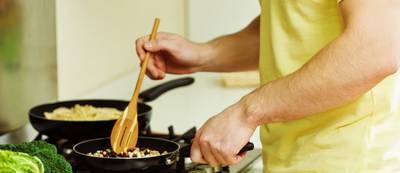5 things that shouldn't be in a healthy kitchen |
|
1. Plastic containersBPA is an ingredient used to make plastic. It is a type of xenoestrogen, a chemical that mimics excess estrogen in the body. The Centers for Disease Control in 2004 found that nearly half of the US population has BPA. Small amounts of BPA enter our bodies from the plastic containers we use to store food. Change them to glass ones that do not attack food - this means that they do not release any chemicals when heated. Pyrex is a great brand because it is also oven safe (Direct from fridge to oven? Yes please). If your budget doesn't allow you to throw away all the old and buy new Pyrex, Mason cans are an inexpensive alternative and can be found in the cheap store. You will not only improve your health, but also gain a reputation as a hipster. 2. Plastic kitchenwareHow often have you bent over a pan of magnificent chicken soup and stir it and feel that your plastic ladle becomes more flexible and elastic when you pull it out? This means there is plastic in your food. Do you have a plastic spatula? You ate plastic. Throw away all plastic utensils and replace them with non-reactive and durable materials. Wood and bamboo are both safe and great options. Stainless steel also doesn't respond to temperature, but be careful not to scratch your pots and pans. Silicone is safe up to 232 degrees Celsius. 3. Plastic bagsYour delicious tomato and hummus sandwich on a flavorful bun deserves more than a chemical plastic clothing bag. Throw away the Ziplock and wrap dinners and healthy snacks in parchment paper or natural beeswax wrap. You can easily find inexpensive parchment paper. Beeswax films are slightly more expensive, but they are reusable. If they are used frequently, they pay for themselves and create much less waste, and you no longer have to buy plastic bags. Another great thing is Costco. Most inevitably have to use a plastic bag, but try wrapping the food in parchment paper first to avoid plastic touching the food.
|
| Do you have to eat soup every day? | Is frozen fish healthier than fresh fish? |
|---|
New recipes
 Toxins in our modern world can affect our health more than we think. We often feel sick without knowing why. Our blood tests are perfect, our vital signs are normal, but we also take pills every day, knowing that our life could be much better.
Toxins in our modern world can affect our health more than we think. We often feel sick without knowing why. Our blood tests are perfect, our vital signs are normal, but we also take pills every day, knowing that our life could be much better.





